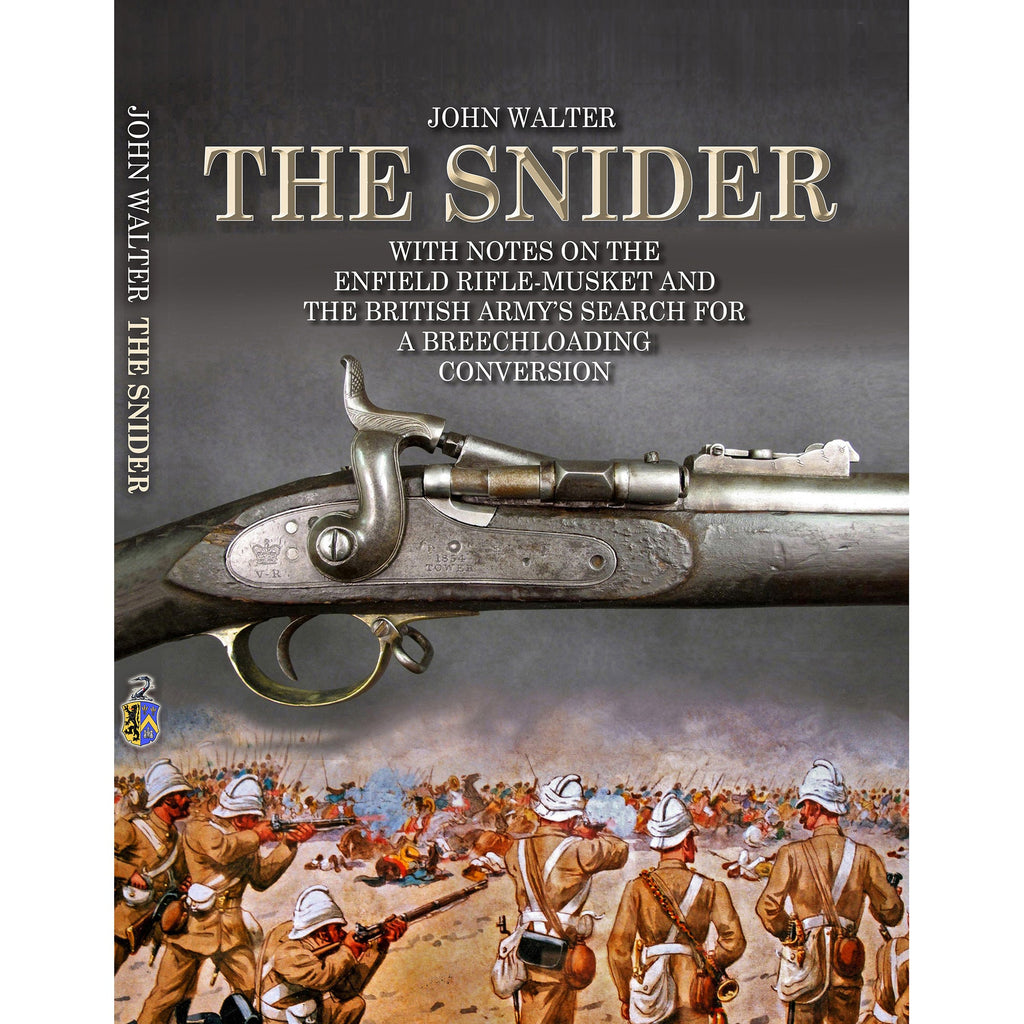-
Newly Printed: Just released in the United States! THE SNIDER with Notes on the Enfield Rifle-Musket and the British Army's Search for a Breechloading Conversion. Written by renowned firearms author John Walter.
Hardcover laminated "wipe clean" printed case; 11 1/8" x 8 3/4", 96 pages, hundreds of full color illustrations. ISBN 978-0-9960731-3-4. Published by the Tharston Press, an imprint of International Military Antiques, Inc.
The British .577 Snider–Enfield was a breech-loading rifle. The American Jacob Snider invented this firearm action, and the Snider–Enfield was one of the most widely used of the Snider varieties. The British Army adopted it in 1866 as a conversion system for its ubiquitous Pattern 1853 Enfield muzzle-loading rifles, and used it until 1874 when the Martini–Henry rifle began to supersede it. The British Indian Army used the Snider–Enfield until the end of the nineteenth century.
The Snider first saw action with the British/Indian Army at the battle of Magdala (Aroghee) in Ethiopia on 10 April 1868, against the forces of Tewodros II of Ethiopia; during the battle the 4th (King's Own) Regiment of Foot alone fired 10,200 rounds. The Snider–Enfield served throughout the British Empire, including Cape Colony, India, Australia, New Zealand, and Canada, until its gradual phaseout by the Martini–Henry, beginning in 1874. Volunteer and militia forces continued to use it until the late 1880s. It stayed in service with the Indian Army until the mid-1890s, because between the Indian Rebellion of 1857 and 1905 the British kept the Indian Army one weapon generation behind British units. The Hunza Scouts may have been the last to use it in action (in the carbine version), in the Chitral campaign of 1895. The Indian units received the Martini–Henry when the British adopted the Lee–Metford. The Ijeshas used large numbers of Snider–Enfields against Ibadan during the 16-year-long Yoruba Civil War (1877 to 1893).
Frank Richards, who served on the Northwest Frontier between 1902 and 1908, records in Old Soldier Sahib that the British army still used Sniders during that period. Sentries on night duty in camps and cantonments would carry a Snider and buckshot cartridges. Should tribesmen try to get into the camp to steal rifles, the buckshot would give the sentries a better chance of hitting the thief, and unlike a .303 round, would be less likely to wound or kill a comrade should the sentry miss.
The Snider was notably powerful. Rudyard Kipling gave a graphic depiction of its effect in his poem, "The Grave of the Hundred Head":
A Snider squibbed in the jungle—
Somebody laughed and fled,
And the men of the First Shikaris
Picked up their Subaltern dead,
With a big blue mark in his forehead
And the back blown out of his head.
- This product is available for international shipping.
- Eligible for all payments - Visa, Mastercard, Discover, AMEX, Paypal & Sezzle


We Buy Military Antiques
Our team expert buyers travels the world to pay fair prices for entire estate collections to singular items.
START SELLING TODAY








